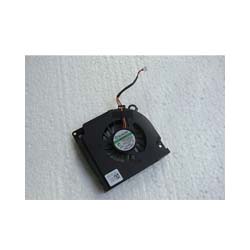If your computer’s running a little loud for your tastes, it’s probably because your fans are running at full speed-even if they do not need to be. Here are a few ways to manage your fan’s speed so they’re keeping your computer cool when they’re necessary and silent when they’re not.
We’ve talked about how to quiet an especially noisy Dell Inspiron 1501 CPU Fan before, but focused on computers running too hot or not clean enough. If you’ve built your own computer, chances are your fan speeds are not being regulated, and they’re just running at full speed all the time. This makes for a very cool computer, but it can be annoyingly loud, especially if you do not need those fans running. There are a lot of ways to regulate those fans, many of which are completely free. Here’s how to set them up.
Method One: Install Fan-Controlling Software
The most ideal way to control your Dell Inspiron 1501 CPU Fan is with something like previously mentioned SpeedFan (or, if you’re on a Mac, previously mentioned smcFanControl). These will give you the most control over your fans, letting you choose how fast they’re running at any given time. SpeedFan can even monitor your computer’s temperatures and adjust the fans accordingly. And, if you head to SpeedFan’s configuration, you can even tell it your desired temperature and have it adjust your fans automatically based on that. Just be conservative , since your motherboard’s temperature values are not always accurate to the degree.
The one downside with SpeedFan is that it is not compatible with every computer out there. You can check out their Support page to see if it’ll work with your machine, or just try it out yourself. If it does not work, you can skip to the next method and see if there are options in your BIOS instead. SpeedFan also requires that your fans be plugged into the 3- or 4-pin headers on your motherboard, not the large, 4-pin Molex connectors. If you only have Molex connectors available, you’ll need to skip to method three. And lastly, it will not control all the fans in your machine-just the ones for which your motherboard supports fan control. If you want to control all your fans, you’ll need to resort to method three below.
Method Two: Tweak Your BIOS Settings
Many motherboards have Dell Inspiron 1501 CPU Fan control built-in to the BIOS settings these days, though they do not always give you as much control as something like SpeedFan does. But, if your computer is not supported by SpeedFan, this is a good plan B . Open up your motherboard’s BIOS settings (usually by holding a key like Delete when you boot your computer), and search for the fan settings. They’re called all sorts of different things (for example, Asus has “Q-Fan Control” , while Gigabyte has “Smart Fan Control”), but generally you should be able to find it under one of the BIOS menus. Enable this feature, and tweak any settings it gives you to your liking. Some machines may only let you set it to conservative or liberal mode, while others will let you individually set temperature thresholds like SpeedFan.
It’ll also offer you a choice between two regulation methods:. Voltage and PWM The voltage mode adjusts the voltage of the fan, while PWM mode sends calculated voltage pulses to the fan to make it run a bit slower For the most part,. this depends on how your fans are plugged into the motherboard. Fans connected with a 4-pin connector should use PWM, while fans connected with a 3-pin connector should use voltage. Voltage is slightly less efficient, and you can not get speeds quite as low as with PWM, but PWM can be finicky sometimes too. If you find PWM is giving you problems, you can always switch to voltage. And, if you can not connect your fans to the headers on your motherboard (that is , if you’re using the large, 4-pin Molex connectors), you’ll need to use method 3 below. Again, your motherboard will only support this kind of fan control for a few fans, too (usually your CPU fan and a system fan). If you want to control them all, check out method three below.
Method Three: Buy an External Fan Controller
While the above methods are great for automatic fan control, they are not always available on every motherboard-and they’ll usually only control one or two fans in your rig. If you want control over everything, you can install an inexpensive fan controller like one of these from Newegg. It fits in one of your computer’s drive bays, and gives you a number of knobs that let you manually control the speed of each of your fans. It will not monitor temperatures for you, so you’ll have to keep an eye on them with something like RealTemp or Rainmeter-but it will give you full control over every Dell Inspiron 1501 CPU Fan in your machine.
None of these solutions is absolutely perfect, but hopefully with a bit of tinkering you can get more control over how fast (and loud) your fans run. Got any of your own tips for fan control in your machine? Let us know in the comments .


